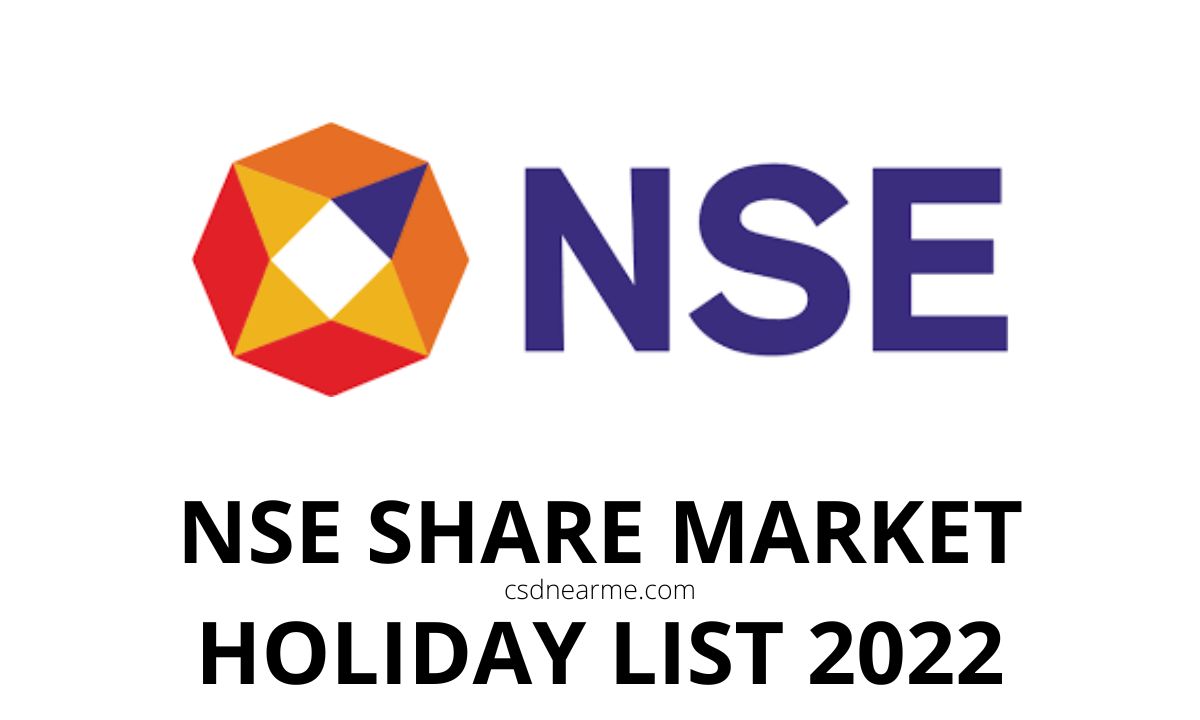
National Stock Market Exchange (NSE) share market Holiday List 2024
Founded in 1992, the National Stock Market Exchange (NSE) is currently India’s fourth-largest share market. It spans a vast area network in India and offers stockholders fully automated electronic trading. Tracking massive assets in the Indian market is the most popular service in the NIFTY 50 Index. Its goal is to increase capital market financial transparency.
The NSE firmly states that every Saturday and Sunday is a holiday. In particular, the NSE Share Market has designated some public holidays as holidays.
NSE Share Market Holiday List 2024
Check here NSE share market Holidays List 2024
| Year | Date | Day | Holiday |
|---|---|---|---|
| 2024 | 26 Jan | Fri | Republic Day |
| 2024 | 8 Mar | Fri | Maha Shivaratri |
| 2024 | 25 Mar | Mon | Holi |
| 2024 | 29 Mar | Fri | Good Friday |
| 2024 | 10 Apr | Wed | EID AL FITR |
| 2024 | 14 Apr | Sun | Ambedkar Jayanti |
| 2024 | 17 Apr | Wed | Ramanavami |
| 2024 | 21 Apr | Sun | Mahavir Jayanthi |
| 2024 | 1 May | Wed | Maharashtra Din |
| 2024 | 17 Jun | Mon | Bakri Id / Eid ul-Adha |
| 2024 | 17 Jul | Wed | Muharram |
| 2024 | 15 Aug | Thu | Independence Day |
| 2024 | 7 Sep | Sat | Ganesh Chaturthi |
| 2024 | 2 Oct | Wed | Gandhi Jayanti |
| 2024 | 13 Oct | Sun | Dussehra |
| 2024 | 1 Nov | Fri | Diwali |
| 2024 | 2 Nov | Sat | Diwali |
| 2024 | 15 Nov | Fri | Guru Nanak’s Birthday |
| 2024 | 25 Dec | Wed | Christmas |
Following public holidays are falling on Saturday / Sunday:
| Holiday | Date | Day |
|---|---|---|
| Mahashivratri | 8 March 2024 | Saturday |
| Muharram Day | 17th July 2024 | Saturday |
| Diwali* | 01 November 2024 | Sunday |
* The Muhurat Trading day timings will be notified closer to Diwali by the Exchanges.
N.B. – The above holidays may be altered or changed by the Exchanges. A Circular will be issued in advance for the same.
NSE Option Chain 2024
An option chain is a tool that displays the prices of various options for a given underlying asset. In the case of NSE India, the underlying asset can be a stock, index, or commodity. The option chain typically shows the strike price, expiration date, and the price of the option (premium) for call options and put options.
The strike price is the price at which the option can be exercised. For a call option, the strike price is the price at which the holder of the option can buy the underlying asset. For a put option, the strike price is the price at which the holder of the option can sell the underlying asset.
The expiration date is the date on which the option expires and can no longer be exercised. Typically, options have expiration dates that are several months in the future.
The price of the option, also known as the option premium, is the cost of the option. The price is determined by a number of factors including the strike price, expiration date, and the volatility of the underlying asset.
When looking at an option chain, investors can use the information provided to identify options that are under- or over-priced, and make informed trading decisions. For example, if the price of a call option with a strike price of $50 and an expiration date of one month from now is $3, an investor may decide to buy the option if they believe the underlying.
